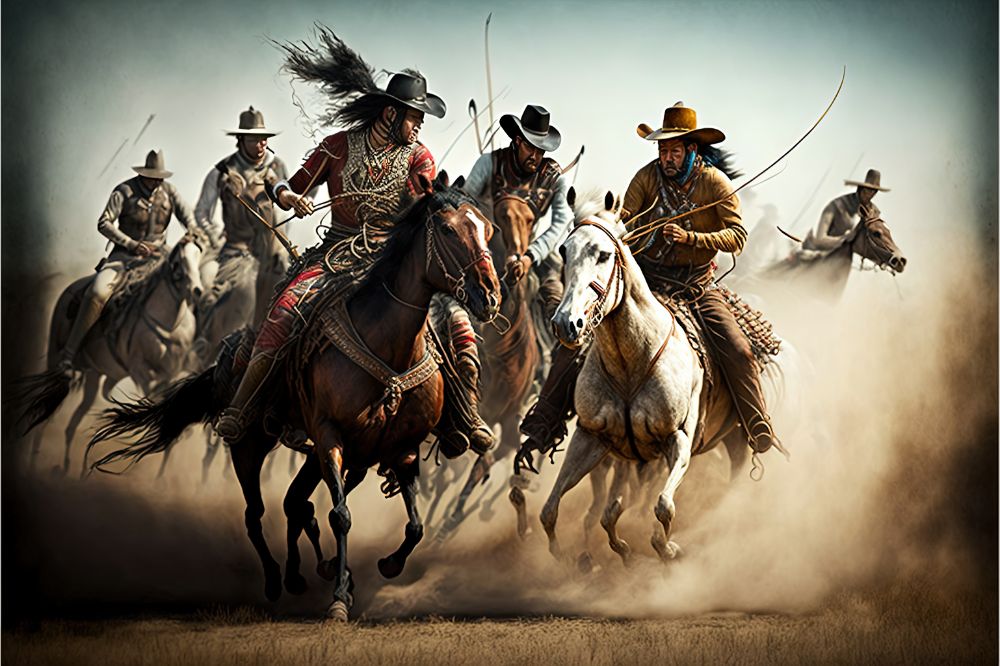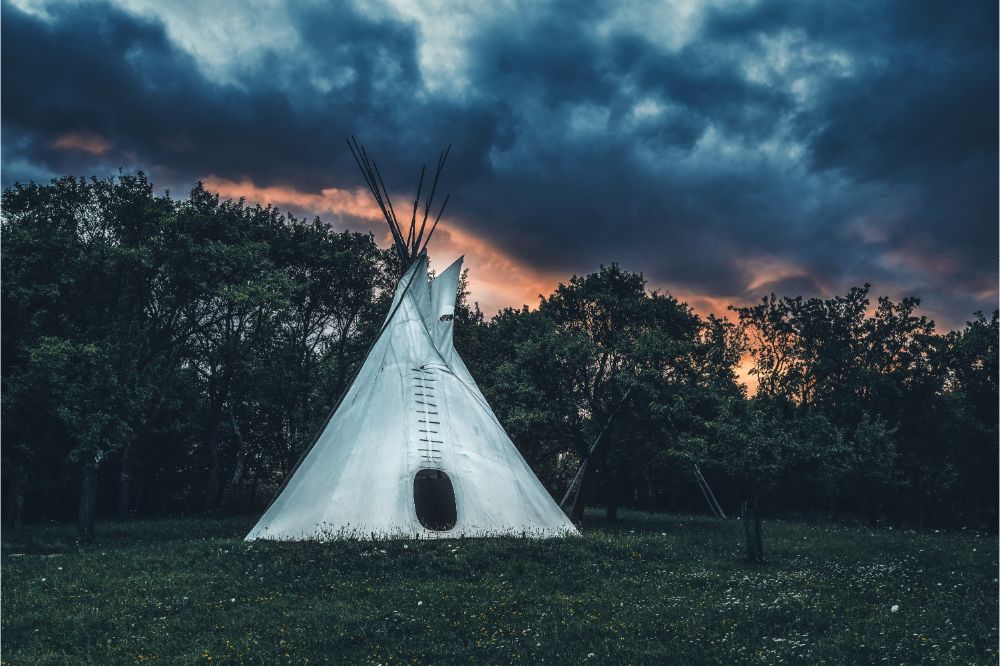With an array of educational activities, learning at home can provide unique opportunities to explore different topics and cultures hands-on. One such topic that deserves special attention is Native American history.
Many classrooms, be they traditional or at home, may overlook or insufficiently explore this rich history, but it’s essential to understanding the diverse past of the United States.
If you’re looking for ideas for homeschooling activities for Native American history, read on to discover how you can engage children in learning about this history and culture through various interactive activities.
Homeschooling Activities for Native American History
1. Reading Books on History and Culture by Native American Authors
Various Native American authors have written many excellent books on their history and culture. A diverse choice of thought-provoking literature is available based on first-hand Native experiences. Here are a few book suggestions that will inform and leave an unforgettable impression:
- “Bury My Heart at Wounded Knee” by Dee Brown
- “The Removed” by Brandon Hobson
- “The Heartbeat of Wounded Knee” by David Treuer
- “An Indigenous Peoples’ History of the United States” by Roxanne Dunbar Ortiz
- “Our History is the Future” by Nick Estes
- “The Lone Ranger and Tonto Fistfight in Heaven” by Sherman Alexie
- “Crazy Horse” by Mari Sandoz
Each of these books will provide an insightful look into the past and give your kids a better understanding of the present issues and intercultural relations and equip them with the power of knowledge for constructing a better future.
2. Exploring Native American Traditional Music
Native American music is rich and diverse, with each tribe having its unique sound. Music was integral to Native American culture and used for entertainment and religious purposes.
The best way to learn about Native American music is to listen to it. There are many recordings of traditional Native American songs available online or at the local library. If you prefer a more first-hand experience, you can also attend a powwow or other event to experience Native American musical performances live.
For a more creative approach, creating your own Native American music could elevate your at-home classroom into a musical masterclass. Many tribes use drums in their music, so this would be an excellent place to start.
You and your kids can also try to make flutes and other musical instruments using traditional methods. Finally, if you’re feeling particularly adventurous, you can learn traditional dances, like the rain or sun dance, alongside playing music.
3. Trying Native American Arts and Crafts
If you’re looking for a fun educational activity with your kids, exploring authentic Native American arts and crafts could help your curious students understand how these diverse cultural traditions developed and help them become more mindful of cultural preservation.
There are many beautiful and unique things to make, from pottery to dreamcatchers. Not only will your kids learn about the culture and history of the Native Americans, but they’ll also have a blast doing it.
Here are just a few ideas to get you started:
Pottery
Making pottery is a time-honored tradition of many Native American cultures. Find online tutorials and design examples, gather your kids, and try it. You can use air-dry clay or even playdough to make simple shapes.
Once done, paint or decorate them according to the models you’ve found to resemble the real deal as closely as you can manage.
Dreamcatchers
These beautiful handmade objects are believed to capture bad dreams and bring good luck. For inspiring, fun, and creative homeschooling activities for Native American history, have your kids make their dreamcatchers using colorful beads, feathers, and yarn. They’ll love seeing their creation come to life.
Salmon Jerky
You can make this delicious snack by drying strips of salmon in the sun or a dehydrator. It’s a great activity if you live near the coast (or have access to fresh salmon). Jerky-style food has been a staple of Native American cuisine for generations and has enriched the modern American cooking tradition with its flavor-rich, long-lasting delicacies.

4. Exploring Native American Religions and Mythology
The Native American peoples have a lot of diversity in religious practices, beliefs, and historical roots of these beliefs. There are many different tribes, each with diverse worldviews and practices.
However, several commonalities exist between them. Many Native American religions share a belief in the Great Spirit or Creator while also typically being polytheistic. They also usually believe that everything in the world is connected and has a spirit.
One way to learn about Native American religions is to read about them. Many terrific books are available on the subject. You can also find websites and other resources online.
Another way to learn is to attend Native American events where you’d be welcome to witness and perhaps even participate in some spiritual or religious practices. Just make sure that the event welcomes the public and encourages educational visits.
5. Field Trip to a Site of Historical Significance
To truly get a feel for Native American history, consider taking a field trip to a site of historical significance. Your field trip could take you to a local reservation, archaeological site, or even a place like Jamestown or Plymouth Rock. Whatever the destination, thoroughly research ahead to make the most of your visit.
When at the site, take some time to explore and take in the surroundings. Ask your children questions about what they see and what it might represent. If there are any tour guides available, make sure to take advantage of their knowledge. And don’t forget to snap some pictures – this will be a trip your family will always remember.
6. Watching Video Interviews of Native American Elders
There are numerous interview videos of Native American elders available online. These interviews can provide valuable insight into the experiences and memories of Native Americans.
One such video is an interview with Yvonne Walker-Keshick, a former attendee of one of the Christian religious boarding schools for Native Americans. In the interview, Walker-Keshick discusses her experience growing up while attending one of these schools, which operated in Michigan between 1829 and 1983.
She talks about her childhood memories and the repression that Native kids experienced in schools designed explicitly with their cultural assimilation and conversion in mind.
Another video interview is with Marlene Spencer Silma, a member of the Yakama Nation. In her interview, Spencer Silma discusses her ancestry, being a descendant of a Yakama tribal chief, and her people’s culture and traditions.
The Yakama tribe’s language and culture are endangered. Marlene wishes to preserve it by sharing local myths and legends with the world and reminding us that American history goes further than the European settlers.
These video interviews provide a valuable perspective on the lives of Native Americans. They offer a glimpse into the past and present experiences of these communities.
7. Exploring Native History Through Interactive Media
Native American history is a rich and complex subject that can be difficult to teach in a traditional classroom setting. However, homeschooling provides the perfect opportunity to get creative with your approach to Native American history. One way to do this is by incorporating interactive media into homeschooling activities.
There are several ways to do this. You could create a timeline of Native American history, using different multimedia elements to represent different periods or events. You could also create a digital scrapbook incorporating images, audio, video clips, and written text.
Or you could create a virtual tour of a Native American village or sacred site. Furthermore, for a more unconventional approach, you could engage your kids with less traditional entertainment, such as indie video games featuring themes from Native American history, so long as they present a well-researched interpretation.
Whichever approach you choose, interactive media can help bring Native American history to life for your homeschooled students. By using these tools, you can ensure that your students have a well-rounded and engaging learning experience.
8. Applying Knowledge From Native American History to Identify and Critique Inaccurate Representation
All students need to learn about different cultures and their histories to attain a well-rounded, neutral understanding of the world and better understand their past. When teaching Native American history, it is crucial to be aware of the inaccuracies that popular culture frequently perpetuates, whether intentionally or not. Below are some ideas for homeschooling activities that can help students identify and critique inaccurate representations of Native Americans:
Movies and TV Shows
Watch movies or television shows that portray Native Americans and discuss the accuracy of the portrayal. To enrich this experience, you can pick movies and shows from different periods, watch them chronologically, analyze how representation has changed over time, and discover unchanged elements.
Books
Read books about Native Americans and compare the information you’ve encountered in movies or television shows. Furthermore, you can compare multiple literary sources. Get additional insight by analyzing the differences in literature written by Native Americans versus those written about them by authors of other ethnicities.
Museums
Visit a local museum with exhibits on Native American history and culture. Talk to the staff about the accuracy of the exhibits and look for alternative perspectives.
Events
Attend a powwow or other cultural event hosted by a local tribe. Attending events provides first-hand experience and is an excellent way to learn more about traditional customs and beliefs directly from the people practicing them.

